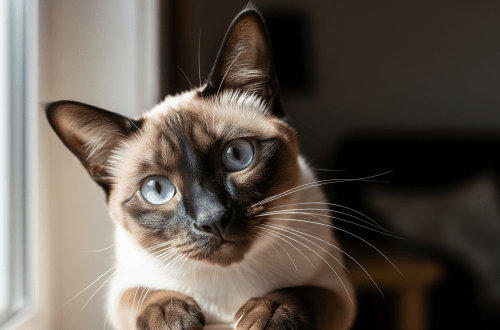Cats may be picky eaters, but sometimes their diet is less about preference and more about avoiding a hidden culprit: chicken. While food allergies in cats are relatively uncommon, they are still a real concern. For example, literature reviews indicate that among cats presented to veterinary hospitals for pruritus (itching) the prevalence of suspected food-allergy adverse reactions ranged from about 12% to 21% according to the Merck Vet Manual. It’s also noted in Today’s Veterinary Practice that food allergies affect perhaps 1% to 10% of cats with skin or ear disorders. Finding the right chicken free cat food could be your cat’s purr-fect solution.
Why chicken?
- It’s one of the most common protein sources in cat foods, so exposure is high.
- Repeated exposure increases the chance of the immune system reacting.
- In reviews of feline food-allergy cases, chicken (along with beef and fish) appears among the more frequently identified offending proteins (source: Merck Vet Manual).
- Because chicken is so prevalent in cat food manufacturing, both declared and undeclared exposure is greater.
Common symptoms of food allergies in cats include:
- Persistent itching, licking, chewing—especially around the head/neck/chest.
- Recurrent skin or ear infections, hair loss from self-trauma.
- Gastrointestinal signs (vomiting, diarrhea) are less common but still possible.
If your cat is scratching, hair-losing, or having GI upsets and you spot “chicken” (or “poultry by‐product”) on their food label, it’s worth considering a diet change.
Why limited-ingredient diets (LIDs) can be a smart move
A limited-ingredient diet (LID) simplifies your cat’s menu by reducing the number of protein and carbohydrate sources. Think of it as narrowing the field so you can more easily detect what might be triggering a problem.
Here’s why LIDs make sense if your cat has food sensitivities:
- Fewer variables = clearer picture. With fewer ingredient sources, you’re better able to spot whether symptoms improve or worsen.
- Reduced exposure to common offenders. Chicken, beef, fish—and if chicken is the issue, a clearly “chicken-free” formula removes one of the major suspects.
- Balanced for ongoing use. Unlike short-term elimination trials done under veterinary supervision, many quality LIDs are designed for long-term feeding.
- Transparent ingredient sourcing. Strong LID brands will name the protein source clearly (rabbit, venison, lamb) and minimize fillers, making both your choice and the manufacturer’s practices more accountable.
In short: if you’re dealing with a cat who’s scratching, hair-losing or flaring and you know chicken is on their food label (or might be lurking via cross‐contamination), a limited-ingredient chicken free cat food makes sense.
Disclosure: As an Amazon Associate, I earn from qualifying purchases. This post may contain affiliate links, which means if you click and make a purchase, I may earn a small commission at no extra cost to you. I only recommend products I would use, trust, and believe offer value to pet owners.
Top Brand Recommendations for Chicken Free Cat Food
Below are three brands that meet a “chicken free limited-ingredient diet” standard and align with our retail-industry perspective (we’ve vetted them personally, they have strong ingredient transparency, minimal recall history). We include both dry and wet chicken free cat food options because texture matters, especially for picky eaters.
Natural Balance Limited Ingredient Cat Food
Why we like them: Natural Balance clearly identifies the single animal protein (salmon or venison) and pairs it with one primary carbohydrate (green pea or sweet potato). Chicken is entirely omitted in these recipes. They also offer both dry and wet formats, which is important if your cat has texture preferences or dental issues.
Pet Pro Tip: When switching to a new food, do a transition over 7–10 days (mix old/new gradually) to reduce potential GI upset. Keep any “extra” treats or flavored medications minimal during the transition.
Instinct Limited Ingredient Diet Cat Food
Why we like them: Instinct uses novel protein options like rabbit (excellent when you suspect chicken or beef may be the issue). They maintain grain-free formulas and clean ingredient lists which are important when you’re dealing with a suspected allergen. Here are some of our favorite chicken free cat food recipes from them.
Pet Pro Tip: Rabbit-based formulas can run higher in price and may require checking that your cat will eat them consistently. Always test a small bag or can before committing.
ZIWI Peak Chicken Free Cat Food
Why we like them: A premium price point, but with very clean sourcing: single-animal protein, minimal carbs, grain-free, limited ingredient. Great for those committed long-term to a clean diet and have the budget. Chicken is completely absent from the options below.
Pet Pro Tip: Because air-dried and high-protein options are richer, introduce gradually (especially if your cat has a sensitive stomach) and monitor portion sizes to avoid weight gain.
When to talk to the vet
Even the best diet change may not be enough if your cat has underlying issues. You should consult your veterinarian if you see:
- Sores, open wounds or secondary skin infections that don’t resolve
- Ongoing vomiting, diarrhea, weight loss despite diet change
- Signs of illness: lethargy, refusing food, rapid deterioration
Why? Because while diet is a major piece of the puzzle, allergens are only one category. Some cats have multiple sensitivities or skin/ear disease requiring medical treatment too.
Wrapping it up on Chicken Free Cat Food
Switching your cat to a limited-ingredient diet or chicken free cat food isn’t just about removing chicken, it’s about giving your pet a clearer shot at comfort and wellness. With the brands above, you’re choosing options that remove chicken, use clean single proteins, and avoid gimmicks.
In our years of pet-retail experience, we’ve seen too many owners jump on “hypoallergenic” labels only to return the bag when the label still listed “poultry by-product meal.” The real key is clarity, simplicity, and consistency. You and your cat deserve that assurance.
Be sure to explore out Cat Food & Nutrition section for more deep dives.












